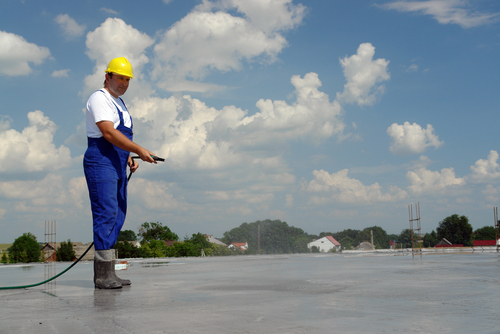Curing plays an important role on strength development and durability of concrete. Curing takes place immediately after concrete placing and finishing, and involves maintenance of desired moisture.
What is curing?
- Curing is the process of preventing the loss of moisture from the concrete whilst maintaining a satisfactory temperature regime.
- The prevention of moisture loss from the concrete is particularly important if the water-cement ratio is low, if the cement has a high rate of strength development, if the concrete contains granulated blast furnace slag or pulverised fuel ash.
- The curing regime should also prevent the development of high temperature gradients within the concrete.
- More specifically, the object of curing is to keep concrete saturated, or as nearly saturated as possible, until the originally water filled space in the fresh cement paste has been filled to the desired extent by the products of hydration of cement.
What methods are commonly used to ensure sufficient moisture for curing concrete?
Concrete is kept moist by providing water through
- Ponding
- Continuous sprinkling
- Covering with wet Hessian cloth
- Covering with specially prepared paper, polyethylene or other plastic sheeting
- Spraying with a liquid membrane forming curing compound
- Synthetic hydrocarbon resins
- Acrylic, vinyl or styrene butadiene and chlorinated rubber
- Wax emulsions
What should be the quality of water required for curing?
As far as the quality of water used for curing is concerned, ideally it should be the same as mixing water.
What should be the period of curing?
- Exposed surfaces of concrete shall be kept continuously in a damp or wet condition for at least 7 days from the date of placing concrete in case of ordinary Portland cement and at least 10 days where mineral admixtures or blended cements are used.
- The period of curing shall not be less than 10 days for concrete exposed to dry and hot weather conditions.
- In the case of concrete where mineral admixtures or blended cements are used, it is recommended that above minimum periods may be extended to 14 days.
Which is the best curing method or technique to be used?
For concrete with a water/cement ratio lower than 0.5, and certainly lower than 0.4, wet curing should be used, but only if it can be applied thoroughly and continuously. If such an assurance is not possible, then membrane curing is preferable, but that, too, has to be well executed.
When should membrane-curing start?
- The timing of the curing spray is critical.
- The curing spray should be applied after bleeding has stopped bringing water to the surface of the concrete, but before the surface has dried out
- The optimum time is the instant when the free water on the surface of the concrete has disappeared so that the water sheen is no longer visible
- However, if bleeding has not stopped, the curing membrane should not be applied even if the surface of the concrete appears dry in consequence of a high rate of evaporation
Will concrete continue to gain strength if there is no moisture present?
No. Concrete cannot gain in strength except by continuous hydration of cement or reaction of pozzolan with lime, which can take place only in the presence of water.
Can the strength gain of concrete that has ceased due to drying out at early ages be restored by moist curing?
Yes, partially, but at some sacrifice of strength. The most rewarding period of curing is the first few days or weeks. Continued moist curing after an early period of drying will continue to add strength, but there is always the possibility that damage from shrinkage may have resulted from early drying.
Does additional curing improve the properties of concrete in other ways than in strength?
Yes. Desirable properties of concrete, such as, abrasion resistance, bond strength and low permeability are improved by additional curing. Also, volumetric changes that may cause cracking are minimised.
Author

About Author – Author’s areas of research include Concrete Technology, Non- Destructive testing of RC structures and Repair and Rehabilitation of RC structures. He is involved in more than 150 consultancy projects for various Government, Public Sector and Private agencies, including Defense and Nuclear departments.


